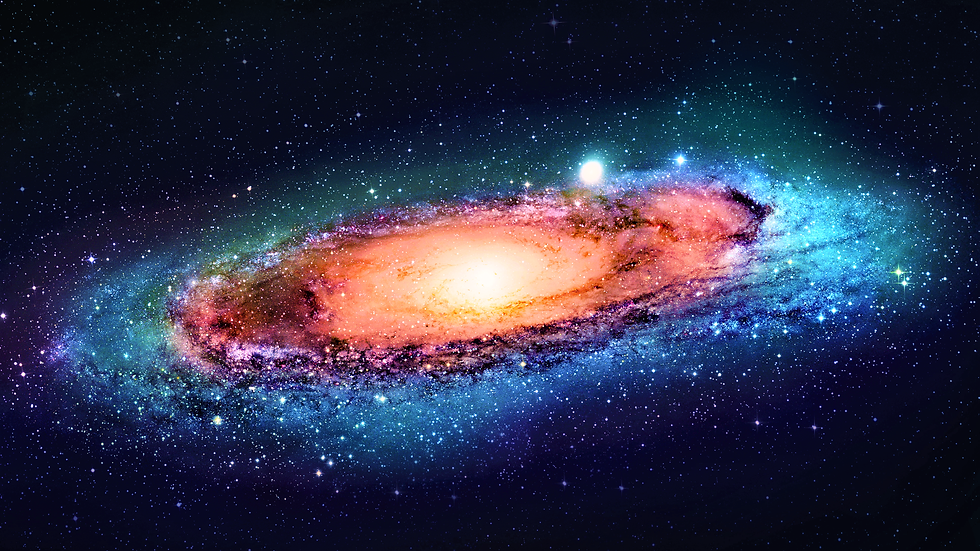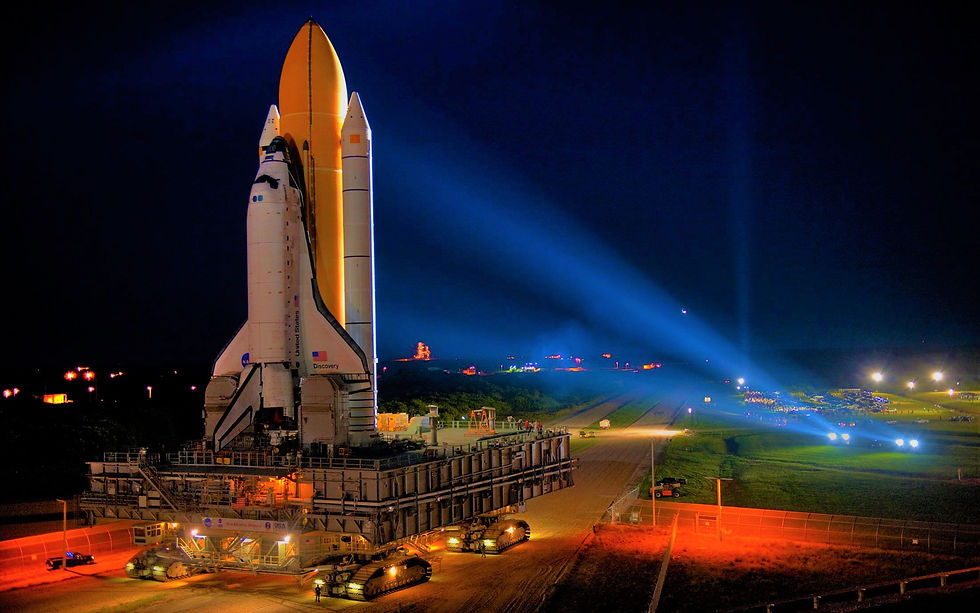Mars
- pilot55kassas55
- 18 يوليو 2022
- 3 دقيقة قراءة
Mars is the fourth planet from the Sun and the second-smallest planet in the Solar System, being larger than only Mercury. In English, Mars carries the name of the Roman god of war. Mars is a terrestrial planet with a thin atmosphere, and has a crust primarily composed of elements similar to Earth's crust, as well as a core made of iron and nickel. Mars has surface features such as impact craters, valleys, dunes, and polar ice caps. It also has two small and irregularly shaped moons, Phobos and Deimos.
Atmosphere of Mars
The atmosphere of Mars is the layer of gases surrounding Mars. It is primarily composed of carbon dioxide (95%), molecular nitrogen (2.8%), and argon (2%). It also contains trace levels of water vapor, oxygen, carbon monoxide, hydrogen, and noble gases.
The atmosphere of Mars is much thinner than Earth's. The average surface pressure is only about 610 pascals (0.088 psi) which is less than 1% of the Earth's value. The currently thin Martian atmosphere prohibits the existence of liquid water on the surface of Mars, but many studies suggest that the Martian atmosphere was much thicker in the past. The higher density during spring and fall is reduced by 25% during the winter when carbon dioxide partly freezes at the pole caps. The highest atmospheric density on Mars is equal to the density found 35 km (22 mi) above the Earth's surface and is ~0.020 kg/m3. The atmosphere of Mars has been losing mass to space since the planet's core slowed down, and the leakage of gases still continues today.

Atmospheric Layers
The atmosphere of Mars is divided into only three layers. The first layer on Mars, the troposphere, is twice as large as the first layer of the Earth's atmosphere.
The middle of the atmosphere is called the mesosphere. The temperature of this layer is usually the coldest part of the atmosphere.
The very top of the atmosphere is called the exosphere. Temperatures in this region are very hot!

Soil
The Phoenix lander returned data showing Martian soil to be slightly alkaline and containing elements such as magnesium, sodium, potassium and chlorine. These nutrients are found in soils on Earth, and they are necessary for growth of plants. Experiments performed by the lander showed that the Martian soil has a basic pH of 7.7, and contains 0.6% of the salt perchlorate, concentrations that are toxic to humans.
Streaks are common across Mars and new ones appear frequently on steep slopes of craters, troughs, and valleys. The streaks are dark at first and get lighter with age. The streaks can start in a tiny area, then spread out for hundreds of metres. They have been seen to follow the edges of boulders and other obstacles in their path. The commonly accepted theories include that they are dark underlying layers of soil revealed after avalanches of bright dust or dust devils. Several other explanations have been put forward, including those that involve water or even the growth of organisms.

Moons
Mars has two relatively small (compared to Earth's) natural moons, Phobos (about 22 kilometres (14 mi) in diameter) and Deimos (about 12 kilometres (7.5 mi) in diameter), which orbit close to the planet. Asteroid capture is a long-favored theory, but their origin remains uncertain. Both satellites were discovered in 1877 by Asaph Hall; they are named after the characters Phobos (panic/fear) and Deimos (terror/dread), who, in Greek mythology, accompanied their father Ares, god of war, into battle. Mars was the Roman equivalent to Ares. In modern Greek, the planet retains its ancient name Ares.
From the surface of Mars, the motions of Phobos and Deimos appear different from that of the Moon. Phobos rises in the west, sets in the east, and rises again in just 11 hours. Deimos, being only just outside synchronous orbit – where the orbital period would match the planet's period of rotation – rises as expected in the east but slowly.
Because the orbit of Phobos is below synchronous altitude, the tidal forces from the planet Mars are gradually lowering its orbit. In about 50 million years, it could either crash into Mars's surface or break up into a ring structure around the planet.




تعليقات